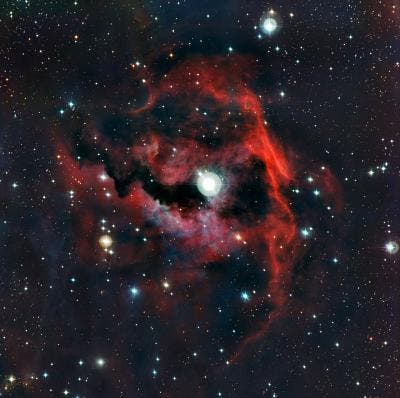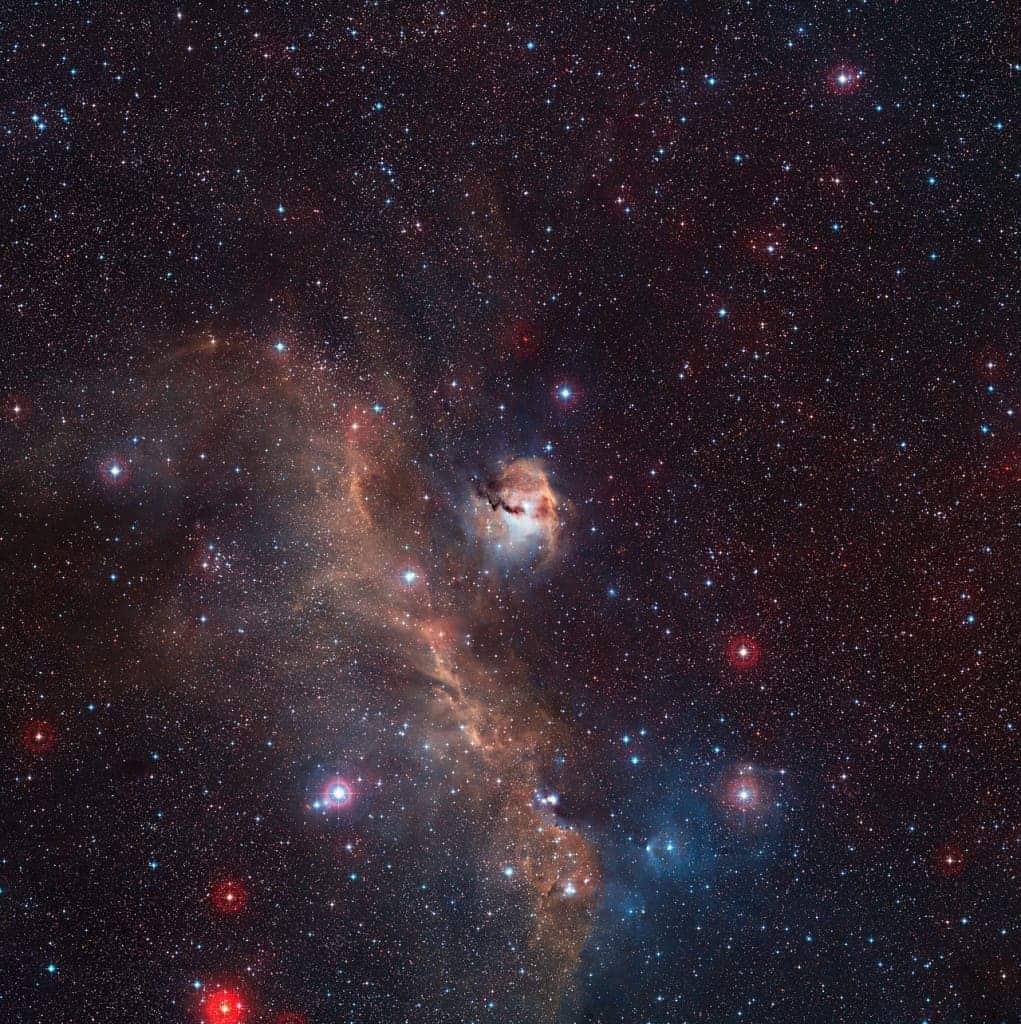Nebulae are among the most brightest objects in the sky, and besides their fantastic halo in the night sky, which served to inspire artists for countless past generations and more to come, they’re also an indispensable part of the Universe’s ‘ecosystem’. Essentially interstellar clouds of dust, gas, hydrogen, helium and other ionised gases, a nebula serves like a sort of star nursery, feeding new stars with all the matter it needs to mature and shine bright. Such a nebula is IC 2177, or the Seagull Nebula as it’s also better known, thanks to its close resemblance to the bird.

This cloud of gas, known as Sh 2-292, RCW 2 and Gum 1, seems to form the head of the seagull and glows brightly due to the energetic radiation from a very hot young star lurking at its heart. (c) ESO
This fantastic image, taken from the Wide Field Imager on the MPG/ESO 2.2-metre telescope at ESO’s La Silla Observatory in Chile, shows the head part of the Seagull Nebula. At the photo’s center lies its brightest point, due to the strong ultraviolet radiation coming mostly from one brilliant young star (HD 53367), which our brain’s patterning associates it with an eye.

This wide-field view captures the evocative and colourful star formation region of the Seagull Nebula, IC 2177. This view was created from images forming part of the Digitized Sky Survey 2.
The nebula can be found about 3,700 light-years from Earth, on the border between the constellations Monoceros (The Unicorn) and Canis Major (The Great Dog).









